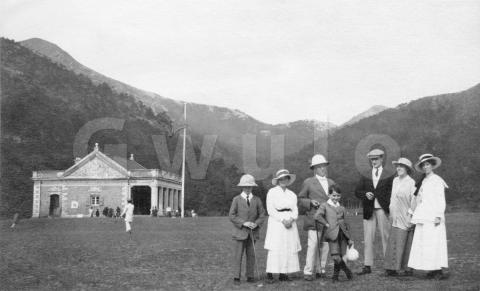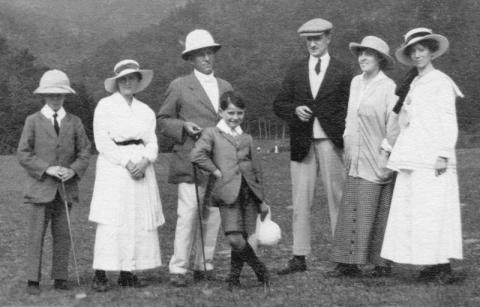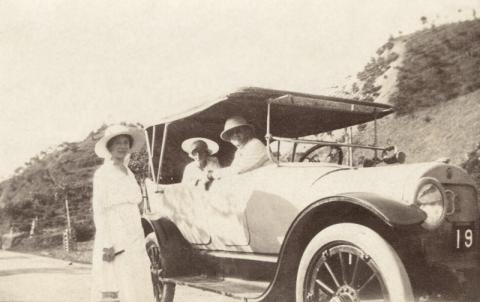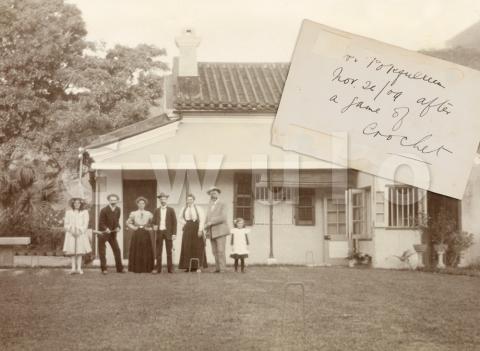The rest of the British people living in Hong Kong came under the heading ‘British civilians’ in the 1931 census. Either they worked in business or for one of the government departments (police, education, public works, etc.), or their spouse or parent did. The author of the 1921 census didn’t hold his civilian compatriots in very high esteem:
Except for a few professional men, employees of the Dock Companies and Civil servants, the European population almost completely changes every 5 years. Most of the employees of the various firms only complete one tour of duty here, and then after the expiration of their home leave are transferred elsewhere. These facts fully explain the allegations of the lack of public spirit in the Colony.
That few thought of Hong Kong as their long-term home is also clear in the English-language newspapers. The press typically spelled home with a capital H, which was always used to refer to Britain. Considering anywhere else to be home would have been very unpatriotic!
Even so, the people in the photo look well-settled, with a mix of friends and family, and membership at the local golf club. Luckily there are notes on the back of the photo that tell us more. The photo was taken at the ‘Golf House, Deep Water Bay’ on New Year’s Day in 1916, and, even better, we find out the people’s names. From left to right we have Cedric, Maud, Father, Lewis, Mr Hosie, Mrs Duncan, and Annie.
As Hosie and Duncan are both Scottish surnames, and many of the men working at the dockyards came from Scotland, I guessed the families shown above were ‘employees of the Dock Companies’ that the census author set apart from the more migratory Europeans. A quick scan down the 1916 Jurors List confirms it – Mr Edward Lumsden Hosie was an accountant, Mr George Duncan was a foreman plumber, and both worked for the Dock Company at Hung Hom.
Mr Hosie was here for the long term, as he appears in every Jurors List from 1915 to 1941. Unluckily for him, he then appears on the 1942 list of civilian internees, meaning he was here during the war and interned at Stanley Camp. He was 57 in 1942, so he was one of the older men in that camp. He lived to see the Japanese surrender in 1945, by which time he was over 60, having spent half his life here in Hong Kong. He’d have returned 'Home' for recuperation with the other internees, and most likely remained there. He died in Aberdeen, Scotland, in 1971.
I wish we knew as much about the man in the topee, but whenever he appears in photos he is simply labelled ‘Father’, which isn’t very helpful! He must have had a senior position at the docks though, as the 1917 photo below shows he was wealthy enough to own one of Hong Kong’s first motor cars, with its registration a low number 19.
The note on the back of this photo says it was taken at Fanling, showing it was already possible to drive there from Kowloon. When the British leased the New Territories (NT) in 1898, travel between towns and villages still relied on the network of footpaths that had developed over the centuries. The British set to work building roads.
The first linked Kowloon to Tai Po, ‘justified by administrative and military needs’, and finished in 1902. Tai Po was the administrative centre in the NT, and the Six-Day War had shown the need to move troops quickly in case of trouble. The NT stayed peaceful though, so instead of soldiers rushing north, the traffic on the new road was mostly southbound, delivering cattle from China to Kowloon.
At the end of 1911 another, longer road was finished. It ran all the way from Castle Peak Bay (today’s Tuen Mun) in the southwest corner of the NT to Sha Tau Kok and the border with China in the northeast. It also met the Tai Po Road at Fanling, extending the options for Kowloon’s drivers. Two years later a third section of road joined Castle Peak Bay to Shamshuipo, completing the Kowloon – Tai Po – Fanling – Yuen Long – Castle Peak Bay – Kowloon circuit. This long circular drive was a popular weekend outing for those lucky enough to have a car.
Maybe the family were out for a scenic drive when the photo opposite was taken? Or perhaps another game of golf was calling, as the 1911 road also gave them access to the Fanling Golf Course. They were certainly a family who enjoyed their sports, as other photos in this set show them playing tennis, and swimming in the sea.
The photo below shows a different family enjoying a more leisurely competition. The note on the back always tickles me: ‘At Pokfulam Nov 26/09 after a game of crochet.’ Competitive crochet – now that would be a sport to behold! Alas, no crochet hooks to be seen here; instead, the hoops and mallets show they’d just finished a game of croquet.
These photos and text came from the draft of my new book, Volume 5 of the Old Hong Kong Photos and The Tales They Tell series.
| You can pre-order Volume 5 to get special pricing, free shipping, and signed copies. Click here for details. Offer ends 22 Dec. |
Volumes 1-4 of the book series are available to order from the Gwulo website, in local bookstores, and from Amazon (affiliate link).
Further reading on Gwulo:
- Other extracts from Volume 5:
- Related pages:
- Deep Water Bay Golf Course [1897- ]
- Edward Lumsden HOSIE [c.1885-1971]
- More photos of early vehicle registration plates
- Deep Water Bay Golf Course [1897- ]



